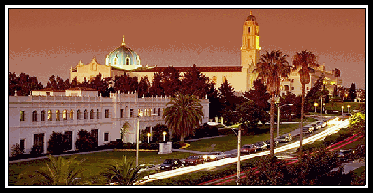
ENVIRONMENTAL AND NATURAL RESOURCE ECONOMICS
 |
| Fall 2019 |
 |
Economics 308 ENVIRONMENTAL AND NATURAL RESOURCE ECONOMICS |
|
|
|
| | HOME | SYLLABUS | CALENDAR | ASSIGNMENTS | ABOUT PROF. GIN | |
|
Study Guide I Chapters 1 and 2 1. Know the difference between environmental economics and ecological economics, including the core concepts of the latter 2. Know the important factors in the standard growth model and the approach of ecological economics 3. Know the difference in the optimistic vs. the pessimistic outlook for the environment 4. Know the issues involved when looking at population, agriculture, energy, and natural resources . Chapter 3 1. Show graphically the impact of a negative externality 2. Show graphically how a Pigouvian tax can be used to deal with negative externalities 3. Know the issues involved when using a Pigouvian tax 4. Show graphically how the price elasticity of supply and demand will affect who bears the burden of a Pigouvian tax 5. Show graphically the impact of a positive externality 6. Show graphically how a subsidy can be used to deal with positive externalities 7. Show graphically how negative externalities impact consumer and producer surplus 8. Show graphically how a Pigouvian tax would impact consumer and producer surplus 9. Understand how negotiations can lead to an optimal result under the Coase Theorem 10. Show graphically how an optimal result can be achieved under the Coase Theorm 11. Know the limitations of the Coase Theorem, including the free-rider and holdout effects 12. Know the other limitations of the Coase Theorem, including equity and distribution issues Recommended problem: Exercise 2 . Chapter 4 1. Know the characteristics of common property resources 2. Show graphically with curves for total revenue, total cost, and profit the concept of the Tragedy of the Commons 3. Show graphically how marginal analysis can be used to illustrate the Tragedy of the Commons 4. Know the policies that can be used to deal with common property resources 5. Know the conditions necessary to achieve agreement among users to deal with common property resources 6. Know the characteristics of the environment that make it a public good 7. Show graphically how the optimal provision of a public good is determined 8. Know the issues that come up when dealing with global common property resources Recommended problem: Exercise 1 . Chapter 5 1. Be able to calculate the equilibrium in the current period 2. Be able to calculate the present value of future costs and benefits 3. Show graphically the dynamic equilibrium for two periods 4. Be able to calculate the dynamic equilibrium for two periods 5. Show graphically the total net benefits in the dynamic equilibrium for two periods 6. Show graphically the loss of surplus that would result if only current consumption is considered 7. Show graphically how a resource depletion tax can be used to reach a dynamic equilibrium for two periods 8. Know the other policies that can be used to reach a dynamic equilibrium for two periods 9. Know the impact of fluctuations in the discount rate on consumption in two periods 10. Know the market forces that lead to Hotelling's Rule 11. Show graphically the price path of a resource that results from Hotelling's Rule 12. Know the issues involved in allocating nonrenewable resources over time Recommended problem: Exercise |